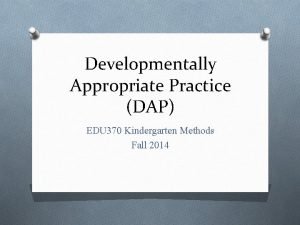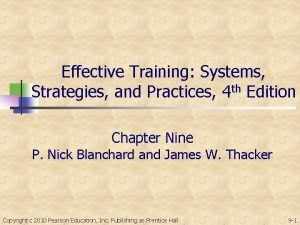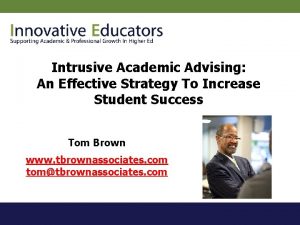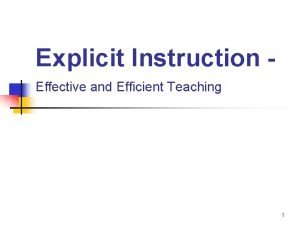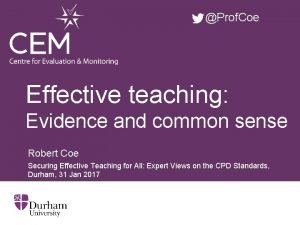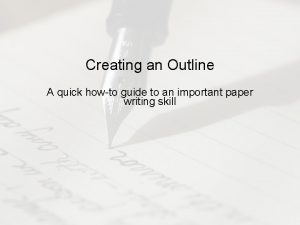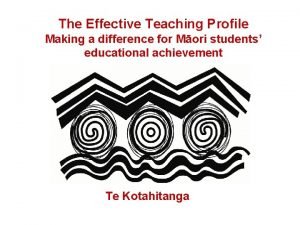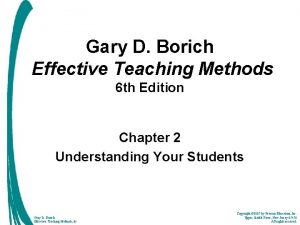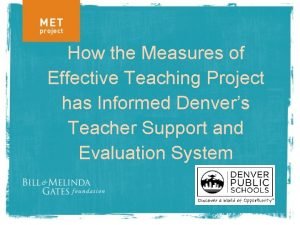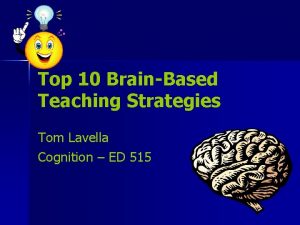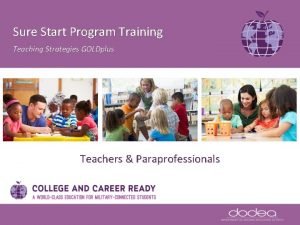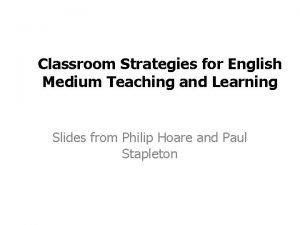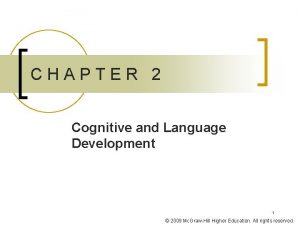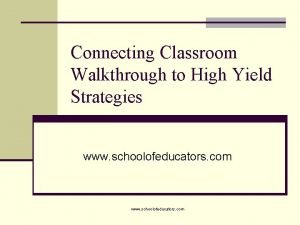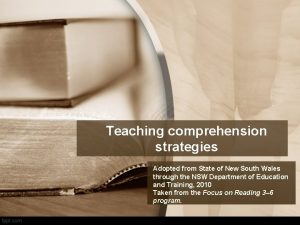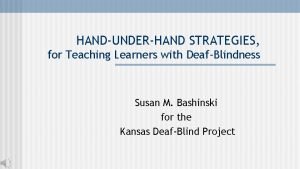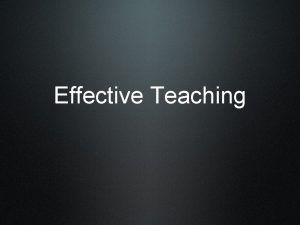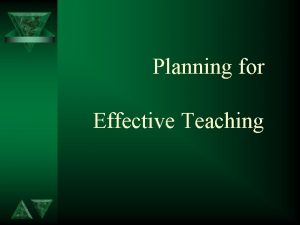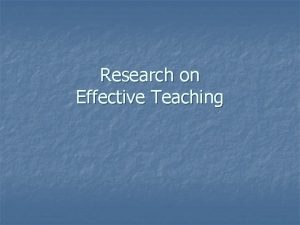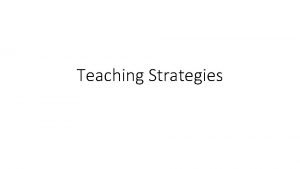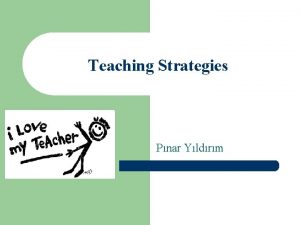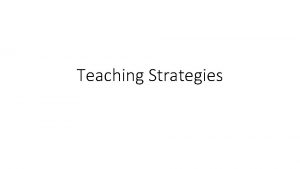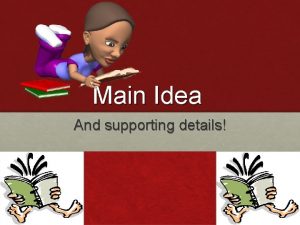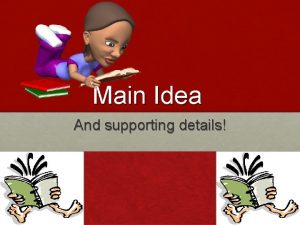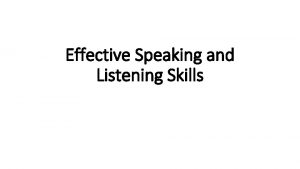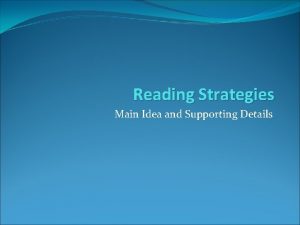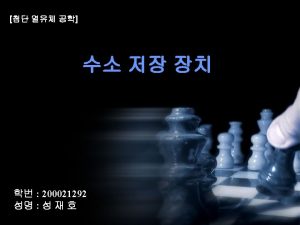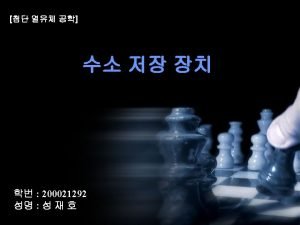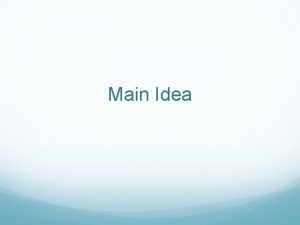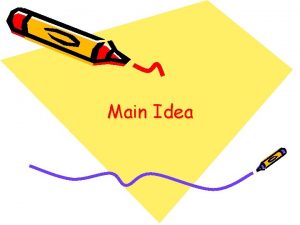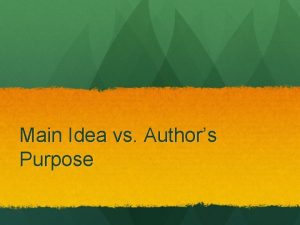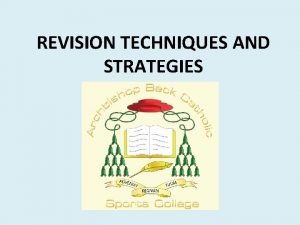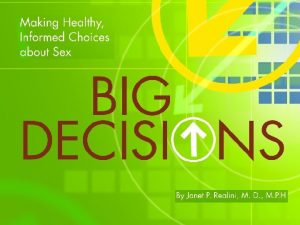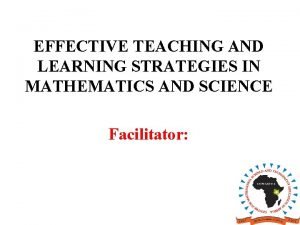The main teaching strategies of effective teaching and

































- Slides: 33

The main teaching strategies of effective teaching and learning.

• The aim: to familiarize teachers with effective teaching and with its strategies that allow develop effective lessons.

Effective teaching the ability to improve student achievement

Interaction between knowledge and teaching: • An individual may possess a substantial amount of subject-matter knowledge, yet be unable to design and implement instructional methods to enhance student learning due to a lack of pedagogical ability. • Conversely, an individual may possess some generic pedagogical skills, yet have limited subject-matter knowledge and again be predisposed to ineffective teaching.

The Four Aces of Effective Teaching (Wall, 1999): Ace 1: Outcomes Ace 3: Engagement Ace 2: Clarity Ace 4: Enthusiasm

Characteristics of effective teachers: Organization and Clarity explains clearly is well prepared makes difficult topics easy to understand uses examples, details, analogies, metaphors, and variety in modes of explanation to make material not only understandable but memorable • makes the objectives of the course and each class clear • establishes a context for material • • •

Characteristics of effective teachers: Analytic/Synthetic Approach has a thorough command of the field contrasts the implications of various theories gives the student a sense of the field, its past, present, and future directions, the origins of ideas and concepts • presents facts and concepts from related fields • discusses viewpoints other than his/her own • •

Characteristics of effective teachers: Dynamism and Enthusiasm • is an energetic, dynamic person • seems to enjoy teaching • conveys a love of the field • has an aura of self-confidence

Characteristics of effective teachers: • Instructor-Group Interaction • can stimulate, direct, and pace interaction with the class • encourages independent thought and accepts criticism • uses wit and humor effectively • is a good public speaker • knows whether or not the class is following the material and is sensitive to students’ motivation • is concerned about the quality of his/her teaching

Characteristics of effective teachers: • Instructor-Individual Student Interaction • is perceived as fair, especially in his/her methods of evaluation • is seen by students as approachable and a valuable source of advice even on matters not directly related to the course

The English course aims to develop learners by: • providing a well-structured and progressive experience of learning English • supporting an appropriate, productive and positive learning experience for all learners • developing learners’ competence in English through the use of contemporary methods of teaching and learning and a variety of materials and media • integrating the use and development of ICT skills through English as a key element in learners’ research and production of their work • encouraging learners to recognise their abilities and strengths, achieve desired learning outcomes, and succeed in their wider aims and purposes 21 • enabling learners to become independent thinkers and lifelong learners • enabling learners through the study of English to explore their own linguistic and cultural identity and develop a sense of the cultural identity of others

Key to the successful management of English classes: Teacher talk Teacher questioning Pair and group work

Natural approach (Krashen & Terrrell, 1995): to make classroom activities as meaningful as possible by relating them to the real world and using real reading materials (e. g. brochures, leaflets, webpages) rather than text from text books

Teaching and learning activities that follow the Natural Approach: 1. Teacher talk focuses on objects in the classroom and on the content of pictures. 2. To minimize stress, learners are not required to say anything until they feel ready, but they are expected to respond to teacher commands and questions in other ways. 3. When learners are ready to begin talking in the new language, the teacher provides comprehensible language and simple response opportunities. 4. The teacher talks slowly and distinctly, asking questions and eliciting one-word answers. There is a gradual progression from Yes/ No questions that learners can answer.

Teaching and learning activities that follow the Natural Approach: 5. Learners are not expected to use a word actively until they have heard it many times. 6. Charts, pictures, advertisements, and other realia serve as the focal point for questions. 7. Activities focus on meaningful communication rather than language form. 8. Pair or group work may be employed, followed by whole-class discussion led by the teacher. 9. The Natural Approach techniques are often used with other methods, like Total Physical Response and Communicative Language teaching.

T P R

Progressive steps in TPR activities: 1. The teacher gives simple TPR commands which learners respond to e. g. “Stand up”, “Turn around”. 2. The teacher uses TPR to teach body parts, numbers and sequence vocabulary e. g. “First touch your nose, then touch your head 3 times”. 3. The teacher introduces classroom vocabulary and props, e. g. , “Go to the door and knock 3 times. ” “Pick up your pencil and put it into the tray”. 4. The teacher introduces physical characteristics and clothing. E. g. “Look at Lena. She has brown hair. ” The teacher then asks questions e. g. “Who has brown hair? ” to which learners need only to give a name as response e. g. “Lena”.

Progressive steps in TPR activities: 5. The teacher uses pictures and props to introduce new vocabulary. He/she may introduce up to 5 new words while talking about the picture e. g. “The brown dog is eating a biscuit. ” The teacher gives out the pictures and asks questions which need only a name as a response e. g. “Who has the picture of the dog? ”. 6. The teacher combines vocabulary about the picture(s) with a TPR command e. g. “Find the picture of the dog and put it on the table”. 7. The teacher uses conditionals combined with the vocabulary from the pictures e. g. “If your picture shows an animal, touch your nose. ” 8. The teacher describes one of the pictures studied. He/she asks learners to point to the correct picture e. g. “Show me the picture which shows an animal eating a biscuit. ”

Three key ideas of teaching sequence: • the power of a good quality text • contextualisation • develop and explore ideas in sufficient detail

Throughout the teaching sequence, teachers give significant time for learners to talk together to help learners: • think through ideas and plan their work; • clarify their understanding; • consolidate their understanding and communicate what they have learned; • practice new vocabulary and turn vague impressions into phrases and sentences that someone else can understand; • solve problems together.

The teaching sequence.

Principles of communicative language teaching methodology: • ensure that authentic communication is the focus of language learning • provide opportunities for learners to experiment and try out what they know • recognize the importance of learners’ errors as they indicate that the learner is building 29 up his or her communicative competence • provide opportunities for learners to develop both accuracy and fluency • link the different skills such as speaking, reading, and listening • expect learners to infer grammar rules rather than directly teaching them.

The strategies found to have the biggest impact on learner achievement are: • active learning (e. g. when learners are involved in planning and navigating the completion of tasks) • feedback (e. g. individual discussions between you and each learner about their work) • reinforcement (e. g. using praise to build learners’ competence) • quality of teaching (e. g. planning for a wide variety of differentiated learning activities).

The three approaches of enquiry-based teaching: Structured inquiry. Guided inquiry Open inquiry.

Active learning.

Active learning: • learners doing more than passively listening to a teacher

Back to back What is it? This activity encourages pupils to work together and to develop clarity in communication and observation. It also promotes active auditory skills. It can be easily transferred into different learning areas.

CAROUSEL What is it? This is a structured information or thought -gathering activity which generates a reasonably concise list of pupils’ thoughts and responses on a particular topic. Pupils work in small groups to convey ideas or to make suggestions as regards the issue at hand. They also have the opportunity to assess collaboratively the ideas of other groups and to use them as a possible basis forming their own responses to questions.

CONSTRUCTING WALLS What is it? This activity allows pupils to consider what points may be most relevant when considering a key question. It subsequently asks pupils to prioritize ideas and information on the question and discuss justifications for their choices.

CREATIVE MATRIX

DARTBOARD EVALUATION What is it? This evaluation technique is a useful quick method for receiving feedback on an activity or event. It is non-verbal and involves no writing.

DIAMOND RANKING What is it? This is a small group activity aimed at prioritizing information and ideas.

Five question: What is it? This is an information gathering activity which also allows pupils to explore the issue in more depth or to break it down into smaller sub-themes or tasks. It gives pupils the opportunity to unpack complicated topics. It allows an exploration of all kinds of possibilities which may lead to action planning and target-setting
 Dap kindergarten
Dap kindergarten Effective training systems strategies and practices
Effective training systems strategies and practices Interpersonal communication vocabulary
Interpersonal communication vocabulary Intrusive advising
Intrusive advising Explicit instruction effective and efficient teaching
Explicit instruction effective and efficient teaching Effective teaching evidence and practice
Effective teaching evidence and practice Four main components for effective outlines
Four main components for effective outlines What is about
What is about Effective teaching profile
Effective teaching profile Gary borich
Gary borich 10 principles of effective online teaching
10 principles of effective online teaching Measures of effective teaching project
Measures of effective teaching project Top 10 brain-based teaching strategies
Top 10 brain-based teaching strategies Teacher strategies gold app
Teacher strategies gold app Emi teaching strategies
Emi teaching strategies Piaget teaching methods
Piaget teaching methods Remedial teaching meaning
Remedial teaching meaning High yield strategies
High yield strategies Teaching comprehension strategies nsw
Teaching comprehension strategies nsw Deaf-blindness teaching strategies
Deaf-blindness teaching strategies Definition of microteaching
Definition of microteaching Future will
Future will Void main int main
Void main int main Hình ảnh bộ gõ cơ thể búng tay
Hình ảnh bộ gõ cơ thể búng tay Ng-html
Ng-html Bổ thể
Bổ thể Tỉ lệ cơ thể trẻ em
Tỉ lệ cơ thể trẻ em Voi kéo gỗ như thế nào
Voi kéo gỗ như thế nào Glasgow thang điểm
Glasgow thang điểm Alleluia hat len nguoi oi
Alleluia hat len nguoi oi Các môn thể thao bắt đầu bằng tiếng nhảy
Các môn thể thao bắt đầu bằng tiếng nhảy Thế nào là hệ số cao nhất
Thế nào là hệ số cao nhất Các châu lục và đại dương trên thế giới
Các châu lục và đại dương trên thế giới Công thức tính độ biến thiên đông lượng
Công thức tính độ biến thiên đông lượng
